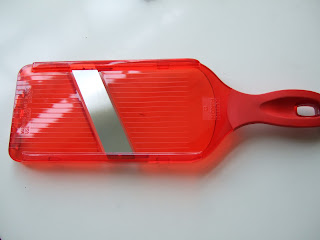
Anyone who thinks that cookery writers effortlessly produce brilliant recipes like a rabbit from a hat should reassure themselves that we struggle like everyone else. Or at least this one does.
 I've just spent the best part of two days (sorry, Matt*) trying to recreate some fantastic breakfast pancakes I had in a Chicago diner called Ina's last year. Appropriately enough they were called Heavenly Hots. When I finally extracted the recipe from the proprietor Ina Pinkney (who, as you can see from her picture, looks like a fairy godmother - exactly the kind of person who would make a perfect pancake) I couldn't believe it would work, it contained so little flour. But as they were the best pancakes I'd ever eaten I gave them a go.
I've just spent the best part of two days (sorry, Matt*) trying to recreate some fantastic breakfast pancakes I had in a Chicago diner called Ina's last year. Appropriately enough they were called Heavenly Hots. When I finally extracted the recipe from the proprietor Ina Pinkney (who, as you can see from her picture, looks like a fairy godmother - exactly the kind of person who would make a perfect pancake) I couldn't believe it would work, it contained so little flour. But as they were the best pancakes I'd ever eaten I gave them a go.I tried three different versions and just couldn't get them to hold together, despite mixing the ingredients ever so gently so as not to disperse the batter. I'm not going to give up, of course, but will have to wait until I hear back from Ina what I've done wrong. In the meantime I've rustled up a batch from the Foolproof Pancake recipe on her website which are almost equally good.
(*Matt, btw, is the book designer. A lovely guy and fellow Liverpool fan.)
Ina's Perfect Pancakes
Makes 6 large pancakes (so theoretically enough for 3, but suspect two would make short work of them)
10g butter + another small slice for greasing the pan
90g plain flour
1/2 tsp bicarbonate of soda
1 tsp caster sugar
1/4 tsp salt
1 large egg
150ml buttermilk
50 ml whole milk (i.e. not semi-skimmed)
A few drops of vanilla extract (optional)
2 tbsp oil
Fresh fruit and honey to serve
You’ll need a medium sized frying pan or griddle.
Set the oven on to its lowest setting or turn on your plate warmer. Heat the butter in a small pan until melted and set aside. Sift the flour, bicarbonate of soda, caster sugar and salt onto a plate. Lightly beat the egg in a medium-sized bowl and gently mix in the buttermilk, milk, cooled butter and vanilla extract if using. Sift the dry ingredients into the batter and fold in with a metal spoon - just enough to incorporate any pockets of flour but still leaving it looking alarmingly lumpy. (Don’t worry, it’s supposed to be like this).
Heat the oil and the remaining butter in a small pan and set aside. Heat a medium frying pan or pancake pan until moderately hot. Scrunch up a piece of kitchen towel dip it in the oil/butter mixture and rub it round the pan. Scoop out a coffee cup or small ladle of batter and pour it into the pan, tilting the pan a little so it spreads out to give you a pancake about 12cm wide. Cook for a minute until the surface is covered with tiny bubbles (about 1-1 1/2 minutes) then flip over the pancake and cook the other side. When both sides are lightly browned transfer to a warm plate in the oven and repeat with the remaining batter, greasing the pan lightly between each pancake. Serve warm with fresh fruit such as blueberries or strawberries and drizzle with honey or (less frugally) maple syrup
By the way, a useful tip. It's easier to get honey to drizzle - or measure it accurately - if you dip your spoon in boiling water first. Applies to golden syrup too.
















